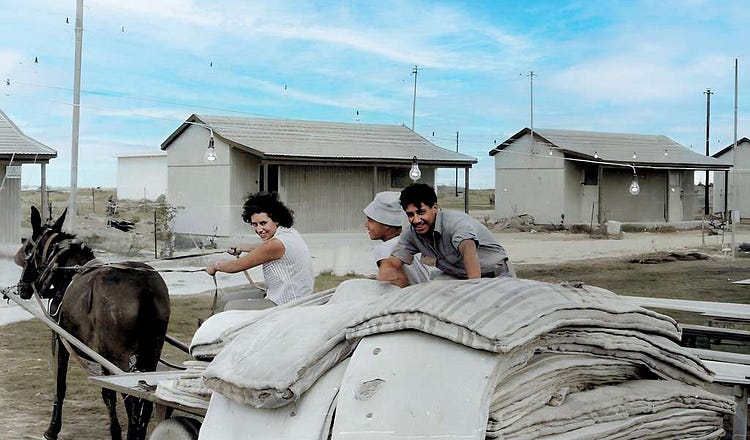
The team of architects and planners trying to envision the rebirth of Nir Oz, a kibbutz on the Gaza border devastated by the massacres of October 7, 2023, knew they’d face design challenges, from the placement of communal buildings to the size of family homes. But Shanee Shiloh, a daughter of the kibbutz and an architectural historian, discovered that they first faced a question both simpler and more complicated than expected: What is a kibbutz?
For much of the life of the state of Israel—which celebrates its 77th birthday today—if you knew one thing about the country, it was the kibbutz. Bernie Sanders volunteered on one, and so did Boris Johnson and Jerry Seinfeld. The kibbutz was a kind of agricultural collective, an experiment in practical communism, that began to appear in 1909, when the Ottoman Empire still ruled the region. All property was communally owned, with members giving according to their abilities, at least in theory, and receiving according to their needs. Kids were raised communally, sleeping away from their parents in a children’s house. Clothes (blue work shirts, khaki shorts) were issued by the kibbutz, and so were newspapers and cigarettes.

